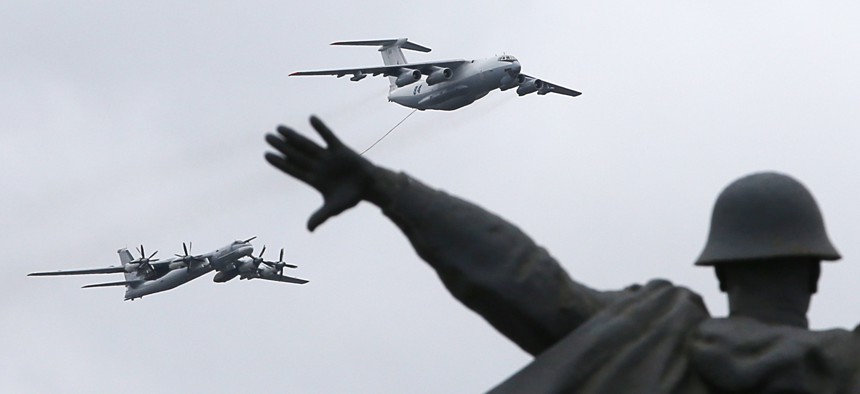BY PATRICK TUCKER
 The United States isn’t the only major military power trying to digitally link all of its weapons and execute operations faster with artificial intelligence. Russia has been making gains in its own version of centralized command and control across land, sea, space, and cyberspace, according to a new paper from a Navy-linked think tank.
The United States isn’t the only major military power trying to digitally link all of its weapons and execute operations faster with artificial intelligence. Russia has been making gains in its own version of centralized command and control across land, sea, space, and cyberspace, according to a new paper from a Navy-linked think tank.Over the past several years, Russian military leaders have steadily advanced an AI-linked concept called automated control systems, or ACS, says the paper, to be published Monday by the Center for Naval Analyses, or CNA. The Russian military’s encyclopedia describes it as: “A system that automates such processes or functions of command and control of troops and (or) weapons (combat assets) such as: collection, processing, storage and delivery of information necessary to optimize command and control of troops and weapons.”
The concept bears an uncanny resemblance to the U.S. military’s own vision for AI-fueled, network-centric operations.
In 2017, U.S. service chiefs began speaking about digitally linking planes, ships, drones, satellites and troops in a comprehensive data web. The idea was to allow any “shooter” on the battlefield to hit any target. If an F-35 Joint Strike Fighter crashed on the way to bomb a radar station, another weapon — a long-range artillery cannon, a drone, a ship-launched cruise missile — would take the shot without commanders having to figure out the next best option. Artificial intelligence would play a key role, analyzing rapidly incoming data streams about targets and the state of U.S. forces and then determining best courses of action for commanders to execute.
The Russian military began testing ACS concepts in 2019, even simulating a (presumably NATO-led) attack on the Crimean Peninsula. Russian forces combined an S-400 anti-aircraft radar and battery with a Pantsir-S missile system to shoot down dozens of enemy cruise missiles, at least in state media accounts.
Like JADC2, ACS would use AI to find targets and build strike plans. Unlike JADC2, ACS might leave humans out of the loop. “The [Ministry of Defense] thinks that in the future, this system will be equipped with AI in order to independently detect potential targets and distribute missile strikes without human intervention,” the CNA paper said.
Work on ACS has been accelerating in recent years, “certainly from the Russian involvement in Syria,” said Samuel Bendett, a CNA adviser who is an adjunct senior fellow at the Center for a New American Security.
In March, Russian defense contractor Sozvezdie showed off new control system software that “enables artillery and rocket forces to work in an integrated information environment,” the paper said.
Jeffrey Edmonds, a CNA research scientist, said, “Russia has been placing a large effort on linking its force from individual soldiers through the operational to the strategic level to improve battlefield awareness and [communications]... I think the biggest improvements here — what they also refer to as ‘net-centric warfare’— is at the tactical level and operational level.”
But Russia is also seeking to use AI to better understand complex geopolitical threats to the Kremlin. Russia’s National Defense Management Center, “which is the key military [communications] node in a crisis or conflict, and houses the Russian military’s supercomputing power employed for real time and forward-looking analysis of the military-political situation—could employ AI-enabled technologies to assist with information collection and analysis as a decision aid,” the paper said.
Perhaps most troubling, the paper suggests that Russia may try to integrate artificial intelligence into nuclear command and control in order to convince the United States that a first strike, which might take out Russian leadership, wouldn’t destroy the country’s ability to fire nuclear weapons.
“The Russian military sees the integration of autonomy and AI elements as key to buttressing the credibility of its nuclear deterrent to the United States, maintaining the force, improving its early warning ability, maintaining a reliable second-strike capability, and defeating adversary (US) missile defense systems,” the paper said.
No comments:
Post a Comment